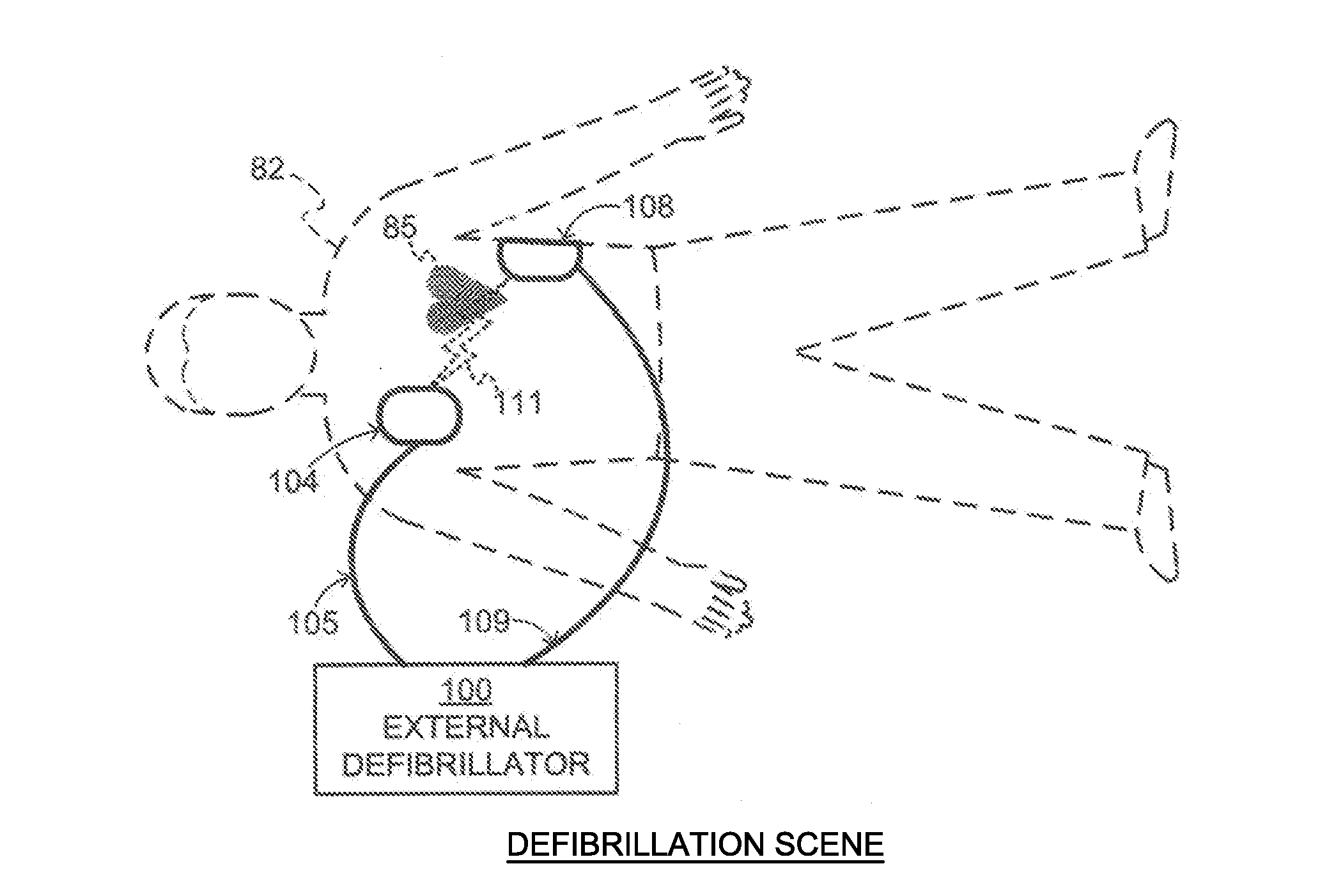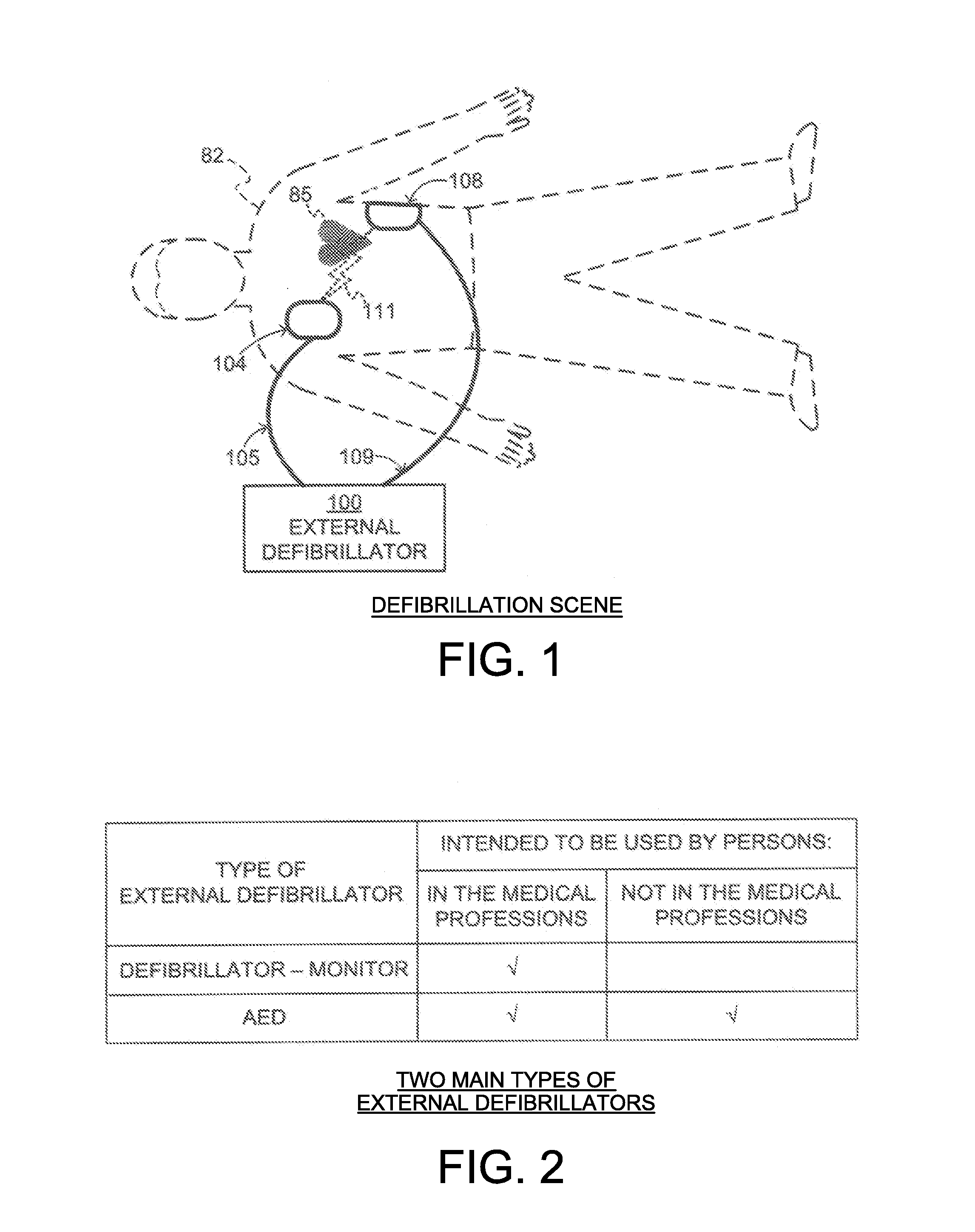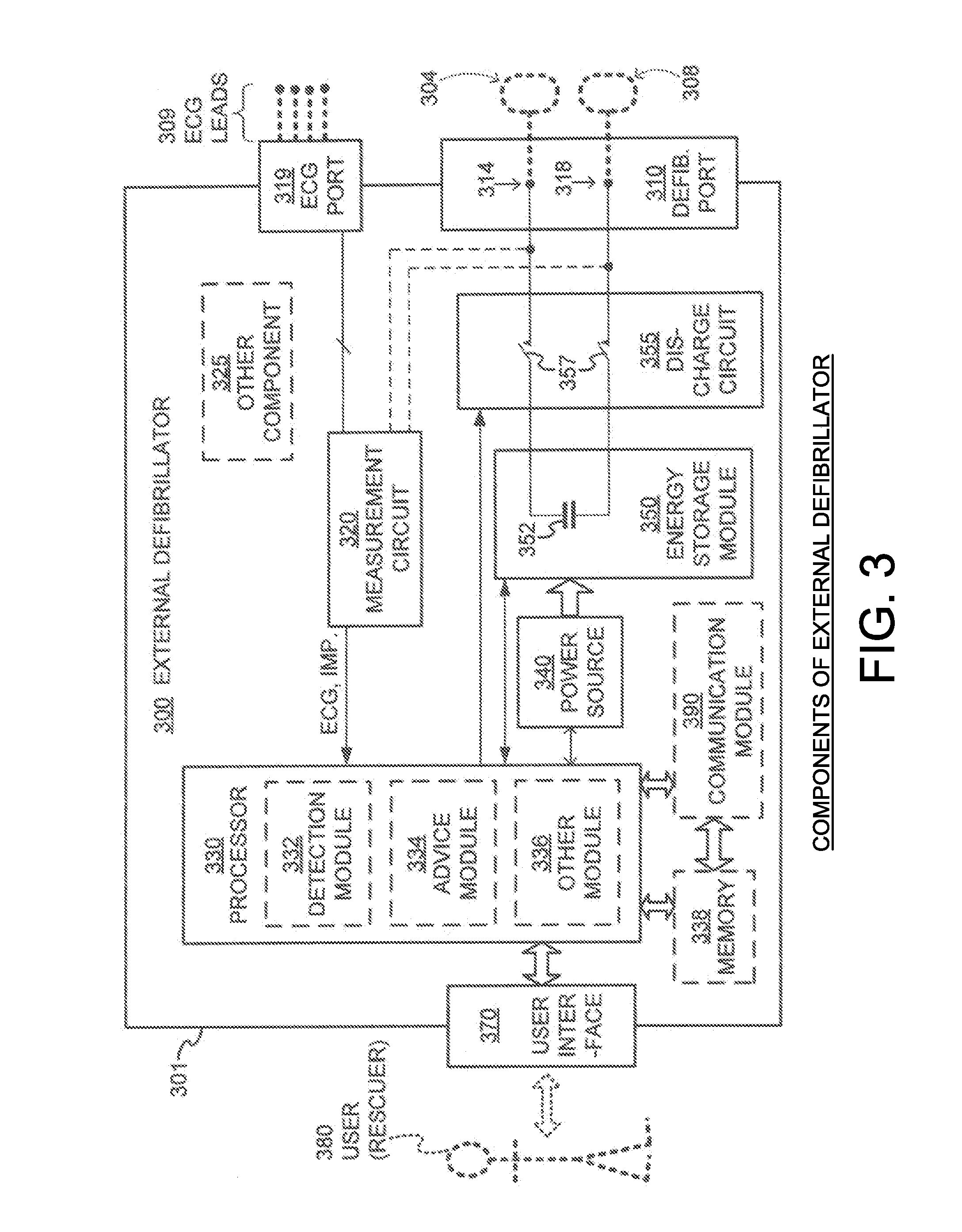External Defibrillator Electrode, Method and System for Reducing ECG Artifact
a technology of external defibrillators and electrodes, applied in the field of external defibrillators, can solve the problems of reducing the amount of blood pumped to the various parts of the body, irregular heart beating, or not at all,
- Summary
- Abstract
- Description
- Claims
- Application Information
AI Technical Summary
Benefits of technology
Problems solved by technology
Method used
Image
Examples
Embodiment Construction
[0032]FIG. 1 is a diagram of a defibrillation scene showing the use of an external defibrillator to save the life of a person according to this disclosure. As shown, a person 82 is lying on his back. Person 82 could be a patient in a hospital, or someone found unconscious, and then turned over onto his back. Person 82 is experiencing a condition in their heart 85, which could be Ventricular Fibrillation (VF).
[0033]A portable external defibrillator 100 has been brought close to person 82. At least two defibrillation electrodes 104, 108 are typically provided with external defibrillator 100, and are sometimes called electrodes 104, 108. Electrodes 104, 108 are coupled together with external defibrillator 100 via respective electrode leads 105, 109. A rescuer (not shown) has attached electrodes 104, 108 to the skin of person 82. Defibrillator 100 is administering, via electrodes 104, 108, a brief, strong electric pulse 111 through the body of person 82. Pulse 111, also known as a defib...
PUM
| Property | Measurement | Unit |
|---|---|---|
| Force | aaaaa | aaaaa |
| Flow rate | aaaaa | aaaaa |
| Electric charge | aaaaa | aaaaa |
Abstract
Description
Claims
Application Information
 Login to View More
Login to View More - R&D
- Intellectual Property
- Life Sciences
- Materials
- Tech Scout
- Unparalleled Data Quality
- Higher Quality Content
- 60% Fewer Hallucinations
Browse by: Latest US Patents, China's latest patents, Technical Efficacy Thesaurus, Application Domain, Technology Topic, Popular Technical Reports.
© 2025 PatSnap. All rights reserved.Legal|Privacy policy|Modern Slavery Act Transparency Statement|Sitemap|About US| Contact US: help@patsnap.com



